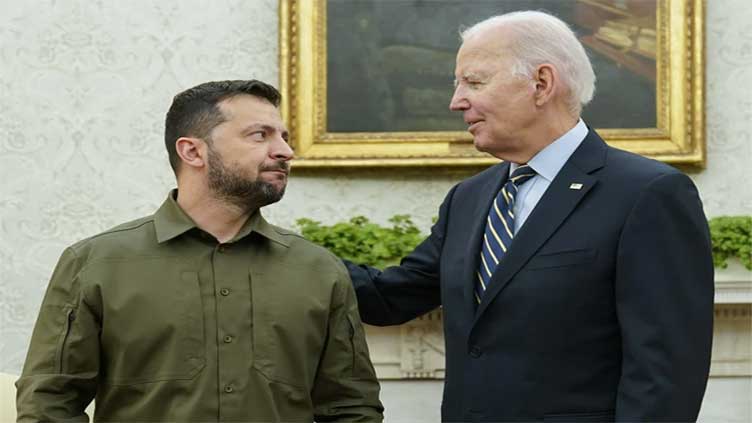US keeps funding Ukraine's military despite it says it's out of money

World
US keeps funding Ukraine’s military despite it says it’s out of money
WASHINGTON (AP) — The White House has been increasingly pressuring Congress to pass stalled legislation to support Ukraine’s war against Russia, saying that funding has run out.
On Tuesday, however, President Joe Biden touted a new military aid package worth $200 million for Ukraine.
Money is dwindling. But the announcement of more weapons being sent to Kyiv just underscores the complexity of the funding. So has the money run out? Or are there still a few billion dollars floating around?
It’s complicated.
STORE CREDIT ...
In a Nov. 4 letter to Congress, White House budget director Shalanda Young said flatly: “We are out of money to support Ukraine in this fight. This isn’t a next year problem. The time to help a democratic Ukraine fight against Russian aggression is right now.”
Since then, the U.S. has announced three more aid packages totaling $475 million. That may seem contradictory, but it’s due to the complex programs used to send aid to Ukraine.
There are two pots of money for weapons and security assistance set up specifically for the war. One is the Presidential Drawdown Authority, or PDA, under which the U.S. provides weapons already in its stockpile. The other is the Ukraine Security Assistance Initiative, which funds long-term weapons contracts.
Money for USAI has all been spent. That pot is empty.
And money for the PDA also appeared to be gone. But then the Pentagon determined that it had overstated the value of the weapons it had already sent Ukraine, overcharging the Ukraine weapons account by $6.2 billion. That effectively left Ukraine with a store credit that is slowly being whittled down. It now stands at around $4.4 billion.
PDA packages continued to be announced every few weeks. But in recognition of the dwindling money, the latest packages have been smaller — about $200 million or less, compared with previous ones that often totaled $400 million to $500 million.
U.S. Air Force Staff Sgt. Cody Brown, right, with the 436th Aerial Port Squadron, checks pallets of 155 mm shells ultimately bound for Ukraine, April 29, 2022, at Dover Air Force Base, Del. (AP Photo/Alex Brandon, File)
BUT EMPTY SHELVES
In theory, the Pentagon would have enough equipment to offer these smaller packages for months. But there’s a caveat: While the credit exists, there may not be enough stock on the Pentagon shelves. So some weapons may be unavailable.
Congressional funding to buy weapons to replace the ones the U.S. sends to Ukraine is now down to about $1 billion. That dwindling money means the military services are worried they won’t be able to buy all the weapons they need to ensure the U.S. military is ready to defend the American homeland.
For example, the 155 mm rounds commonly used by Howitzers are one of the most requested artillery munitions by Kyiv. The demand has been so high that the Army has pressed the Scranton Army Ammunition Plant in Pennsylvania, where the shell casings for the rounds are made, to increase production in order to meet war demands and have enough on hand for American military needs.
On Thursday, Maj. Gen. Pat Ryder, the Pentagon press secretary, told reporters the U.S. could provide the full $4.4 billion in weapons, but with only a quarter of that amount available for replenishment, it’s a tough choice. “We have to start to make decisions about our own readiness,” he said.


